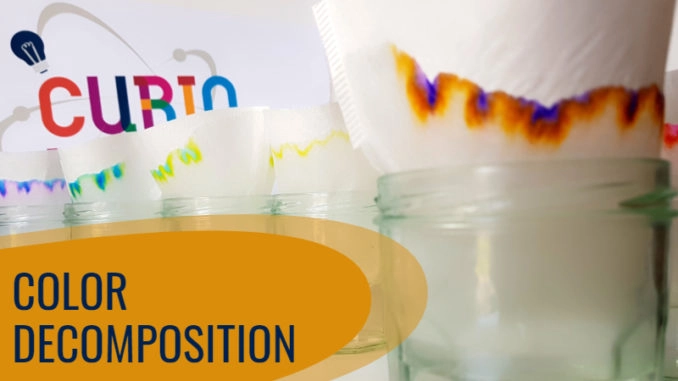
The color decomposition of your markers


The color decomposition to understand primary and secondary colors.
The primary colors are cyan, yellow, and magenta. Three shades from which all the others are derived. One way of discovering the color of the markers is to play with water, a coffee filter, and to use the principle of capillarity.
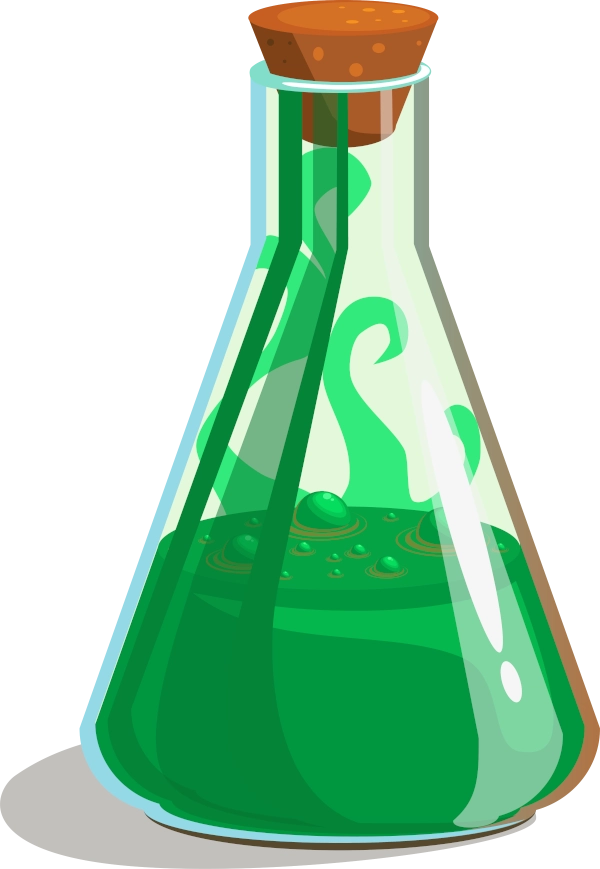


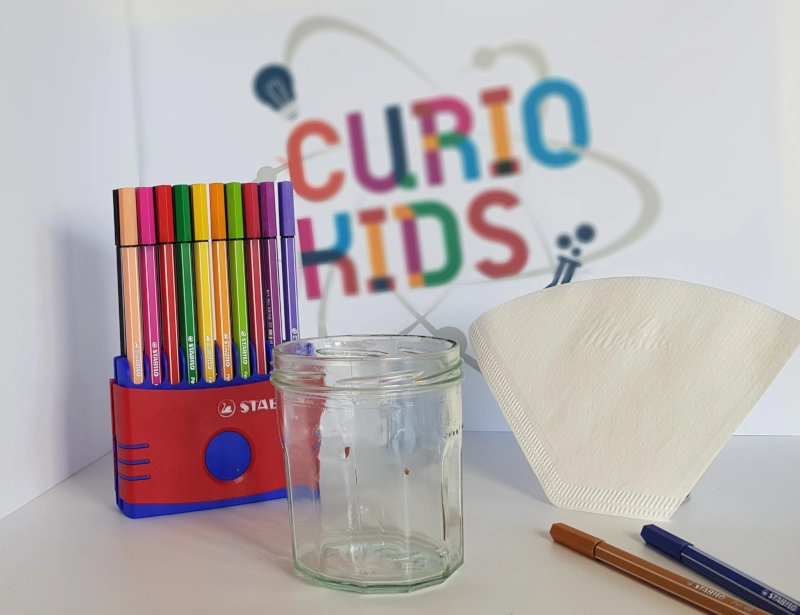

Gather all the requested materials
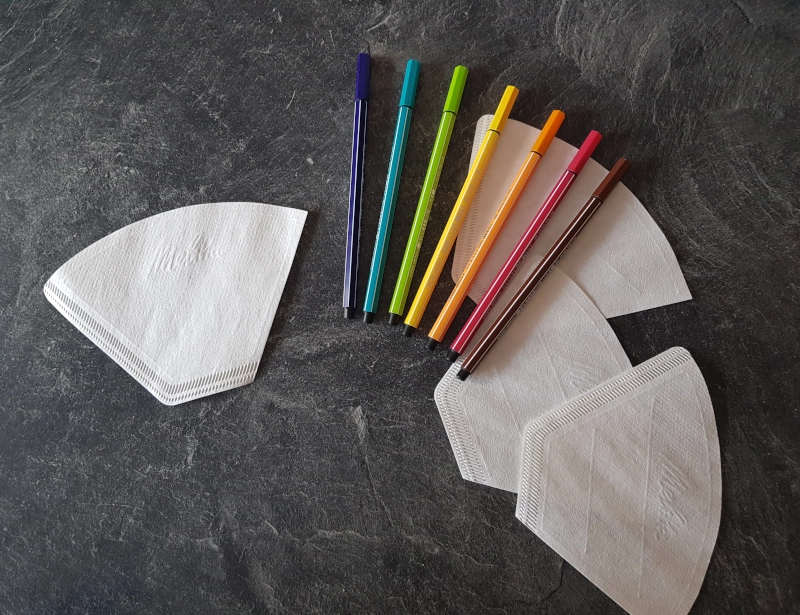

Choose different colors. Ideally, colors that are not blue, red and yellow.
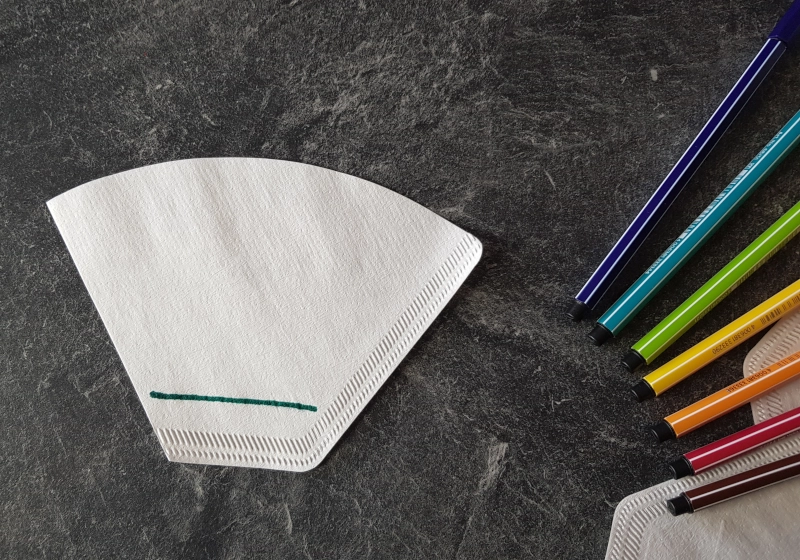
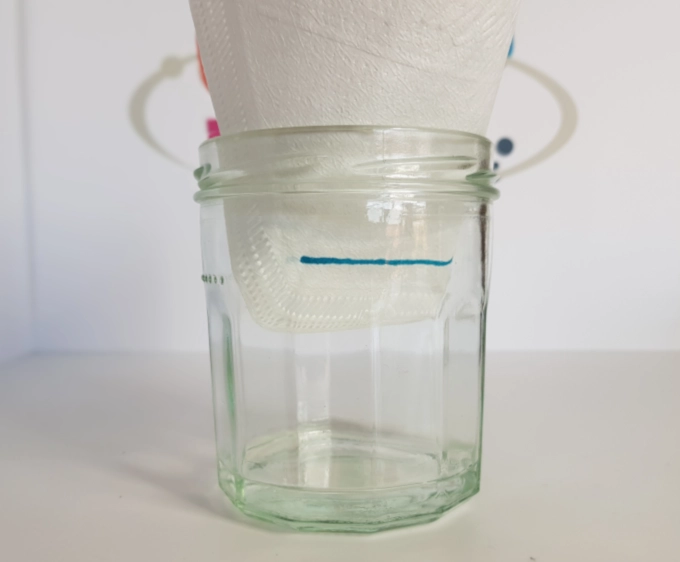

With a felt-tip pen, draw a line at 0.6 in from the edge.

In a glass jar, add water to a height of 0.2 in.
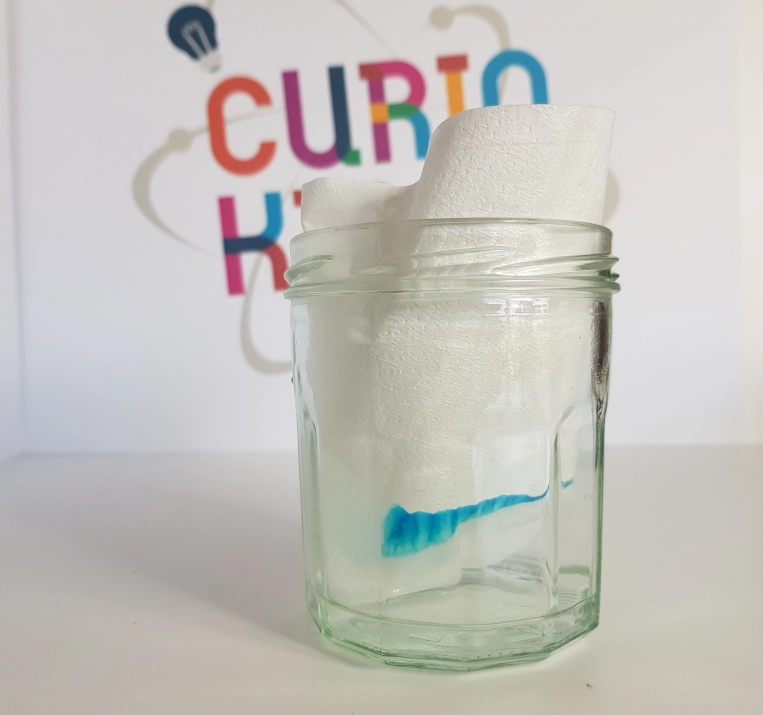

Insert the coffee filter so that the bottom of the filter is in water.
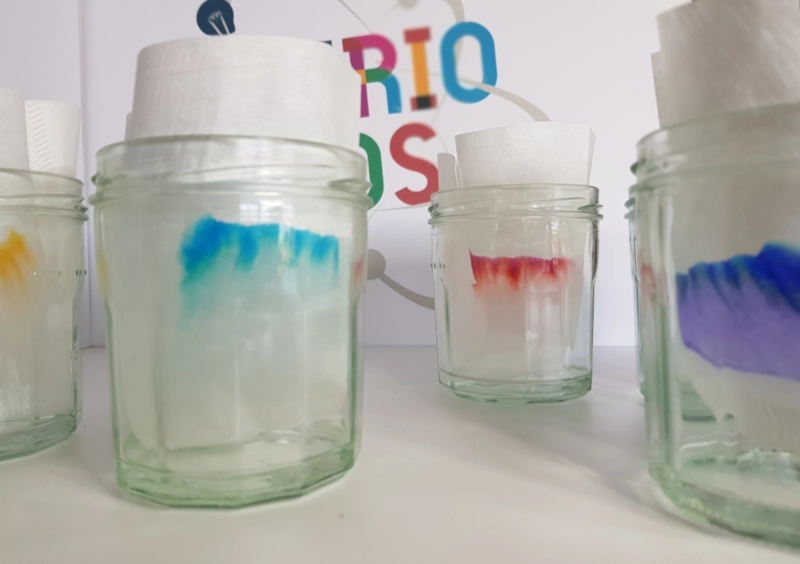

Now watch what’s going on. The color rises in the filter washed away by the water.

Over time, other colors appear. The different colors that make up that of the felt develop on the filter.


The ink in the felt-tip pen climbs into the coffee filter due to the capillary effect. As soon as the water meets the felt-tip ink, it takes the ink with it. The capillary effect is a force that opposes gravity thanks to the presence of a very narrow tube. This allows the colors to break down.
Primary and secondary colors ?
These are colors that cannot be obtained with mixtures. There are three primary colors: yellow, magenta, and cyan. With these, we create secondary colors. For example, mixing blue and yellow gives green.

Test the color decomposition of black, brown, gray shades, and observe!

Have you noticed that some fruit juices are more acidic than others? To find out […]
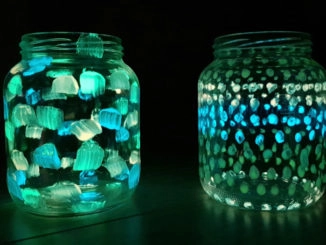
If you are not lucky enough to observe fireflies at home, at nightfall, create this illusion yourself, by making phosphorescent lanterns. […]

Use molecular chemistry to create foods with unexpected shapes. Do you think making orange juice beads is impossible? This is without counting on the properties of Agar, a natural molecule capable of gelling all liquids. Transform yourself into a molecular chemist to surprise your friends with your edible creations. […]
Copyright © 2023 | CurioKids.net - All rights reserved